 The Atlanta Fed's Mike Chriszt speaking to the Rotary Club of McMinnville, Tennessee. Photo by Dalton Perez and courtesy of the Southern Standard
The Atlanta Fed's Mike Chriszt speaking to the Rotary Club of McMinnville, Tennessee. Photo by Dalton Perez and courtesy of the Southern Standard
"Ultimately, the legitimacy of our policies rests on the understanding and support of the broader American public, whose interests we are working to serve… [Our] ability to support a healthy economy will require our continued efforts to engage in two-way communication—explaining our actions and, importantly, listening to what our fellow citizens have to say."
So said Federal Reserve Chairman Ben Bernanke at the Federal Reserve Act's centennial commemoration in December 2013. His words struck home. It was one of those moments when something you took for granted and rarely thought about suddenly comes into focus and spurs action. For me, that action was to leave my home of 20-plus years in the Bank's Research Department for a new role on the Atlanta Fed's Public Affairs team.
As we emerged from the pandemic, we realized how important it was to restart our Speakers Bureau—our program that sends Atlanta Fed experts to groups requesting a presentation. I asked our team to put together a map of where the Bank had engaged the public in face-to-face activities. The picture it painted was telling. Quite simply, we had not been getting to many small towns or rural areas. Rather than trying to spin up a new program, I approached the Bank's leadership and proposed that I take the next two years and visit as many of these communities as I could. (Also, I am retiring from the Atlanta Fed later this month after nearly 36 years, and this initiative felt like the perfect culmination of my career.) With their approval, that's exactly what I did, and this article tells the story of that initiative.
 My first visit during the Regional Outreach Initiative was to Greenville, Alabama
My first visit during the Regional Outreach Initiative was to Greenville, Alabama
Importantly, the main goal of what became known as the Regional Outreach Initiative was simply to explain the history and purpose of the Federal Reserve and share the Bank's current view on the economy and Fed policy, dispel the many myths and misconceptions about the Fed, and answer any questions as best I could. In doing so, I learned a lot about how these areas were doing and what their major economic concerns were. I visited more than 100 towns where the Fed hadn't visited and, as Chairman Bernanke said, hadn't heard what they had to say. We concentrated on engagement with civic groups and community leaders, which are typically represented well in clubs like Rotary and Kiwanis, and in local chambers of commerce.
What I learned about the economy in our region's small towns
Economically, many small towns in the Southeast are doing quite well. It probably comes as no surprise that most coastal towns have done well as tourism surged after the pandemic. Many of these towns have solid anchor institutions like colleges or universities or serve as a hub of essential services like healthcare, and they also seem to be doing fine. Southeastern ports stayed busy, and our waterways yielded economic and recreational benefits. The strongest performers were towns that had a mix of types of advantages.
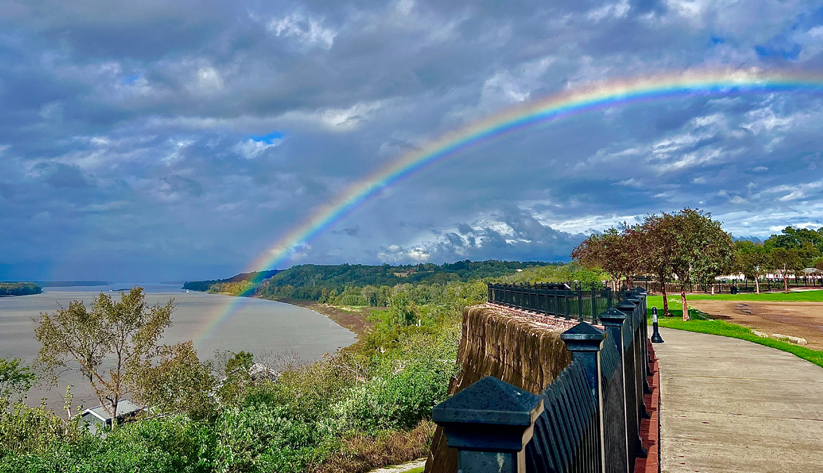 A view of the Mississippi River from Natchez, Mississippi. The waterway is a crucial part of the region's economy.
A view of the Mississippi River from Natchez, Mississippi. The waterway is a crucial part of the region's economy.
Some smaller communities, however, are in survival mode, with stagnated economies. These towns typically have only a few major employers and a number of smaller, diversified businesses that allow for declines in some sectors to be at least partially offset by growth or stability in others.
Importantly, in towns that are thriving or surviving, there is strong leadership and partnerships among business, local government, and civic/religious organizations. They have short- and long-term plans to keep their communities moving forward. Most include plans to attract new residents and keep their current citizens from leaving for opportunities in bigger cities.
But some towns, unfortunately, are struggling. Although poverty is present in big cities and small towns, in some smaller cities it is prevalent and growing. These towns in the past were either railway junctions that lines no longer serve, centers for agricultural activity that no longer exists, or home to one or two major manufacturers that are no longer producing.
Major economic concerns
When I visited communities, their long-term economic health was by far the largest topic of discussion. Although communities shared concerns about rising prices and employment trends—issues well within the Fed's wheelhouse—the most prevalent economic worries were more structural and longer-term. Many people voiced concerns about population declines and dwindling career opportunities for younger people. Developing the kind of amenities that attract and retain businesses and people was a top goal among communities, as was improving housing availability and affordability and investing in education and workforce development.
Taking all these longer-term concerns together, a picture emerged of what I can best describe as the fading of the "American Dream" in many small towns and rural areas. Economic opportunity and mobility were seen as lacking or threatened, and few saw solutions on the horizon. People were frustrated with what they saw as the lack of concern from organizations that supposedly have the job of making the economy work for them. As a Federal Reserve official, I could offer little apart from assuring folks we were steadfastly committed to achieving our mission of price stability and maximum employment. I also emphasized the Fed's apolitical and nonpartisan nature, stating that fiscal policy was the purview of elected officials. That said, the disenchantment of many people in small towns and rural areas with the current and future economic situation served as a wake-up call.
What I learned about the people in our region's small towns
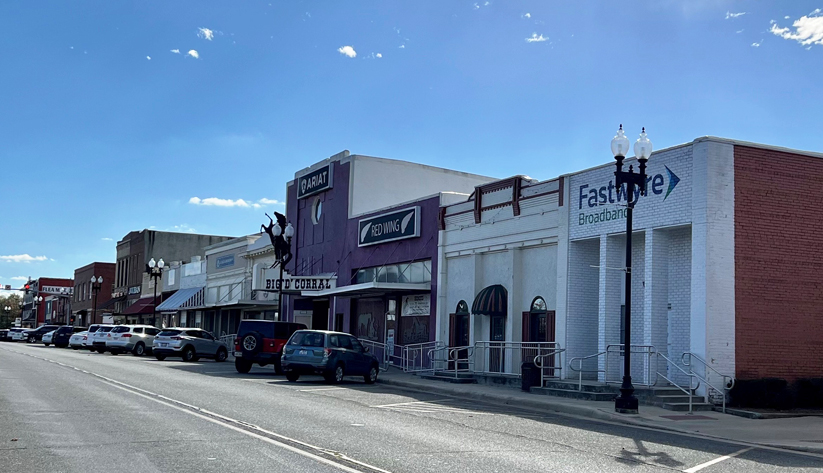 The history of DeRidder, Louisiana, is one of resilience.
The history of DeRidder, Louisiana, is one of resilience.
Despite the challenges many of these areas face, I left every place I visited with some degree of optimism because of the dedication and pride people have regarding their towns. I hesitate to single out any communities because they were all special in their own way, but two stand out. The first was Brewton, Alabama, which was also one of the first places I visited during my outreach initiative. Brewton's business leaders, elected officials, and civic groups had partnered to build a bright future for the community. The second was DeRidder, Louisiana. My visit coincided with a recent announcement that a major employer would be shuttering operations. Nonetheless, the community was resilient, not resigned. They had faced economic trials in the past, and leaders were committed to meeting the latest challenge.
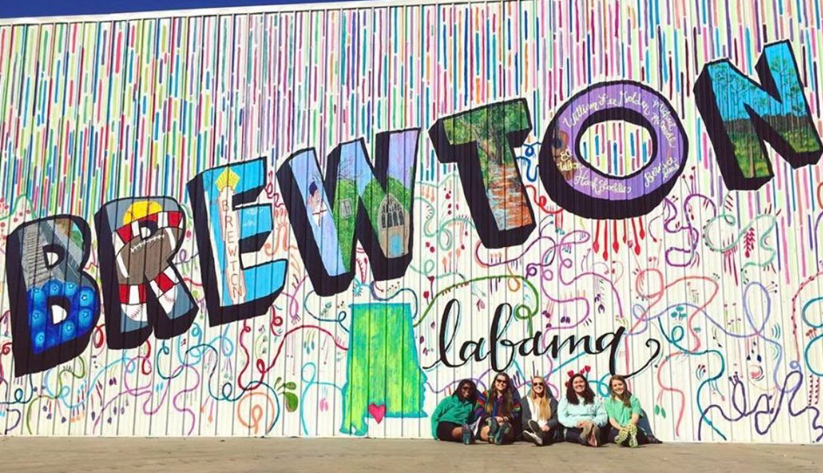 A mural in Brewton, Alabama. I think every place I visited had some form of public art that served as a focal point for their community.
A mural in Brewton, Alabama. I think every place I visited had some form of public art that served as a focal point for their community.
The questions I received during these engagements reflected an excellent grasp of economic conditions, both local and national. During most visits, I noted their awareness of issues such as the impact of federal budget deficits on the long-term health of the national economy, the impact of inflation, and the availability of labor on local economies.
I have one other thing I'd like to mention about the people in our region's small towns. They take great pride in those who have served in our country's overseas conflicts. In every town there were tributes and memorials to the servicemen and women from their towns. Each one was special, unique, and meticulously landscaped. Many listed the names of those who sacrificed their all for our country, showing how important recognizing their service is to these communities. Many towns had museums that were home to the countless training centers and camps located in the Southeast.
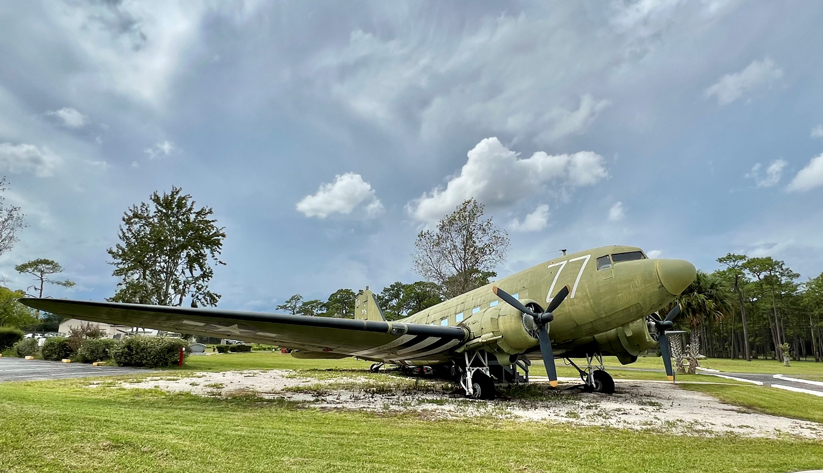 A museum outside Starke, Florida, pays tribute to the soldiers who trained there for service in WWII.
A museum outside Starke, Florida, pays tribute to the soldiers who trained there for service in WWII.
An unexpected delight
Driving through the Sixth District to my engagements yielded an unexpected benefit. The Southeast is a truly beautiful region, with forests, waterfalls, beaches, and an endless number of nature trails and wildlife preserves. I avoided interstate highways whenever possible and stopped in many places on the way to my destinations just to take a short hike. I was never disappointed.
 A waterfall outside Tullahoma, Tennessee.
A waterfall outside Tullahoma, Tennessee.
Protecting these natural resources is a top concern for people I met. They see themselves as stewards of our region's landscapes and wildlife, and they see the economic benefits of replacing harvested trees and attracting tourists. Nobody I met took this bounty for granted, and I gained an appreciation for how intertwined our economy is with our natural resources and the people who care for them.
Final thoughts
As I wind down the Regional Outreach Initiative and work with my colleagues in Public Affairs to ensure the Bank continues to engage our fellow citizens throughout the region—in big cities and small towns—I appreciate the importance of direct outreach more than ever. Without it, the Fed could lose touch with the people it serves, and its mission becomes abstract. Worse, the public could view the Fed as a mysterious, out-of-touch institution. Every—and I mean every—community I visited showed warmth and gratitude that the Atlanta Fed cared enough about their communities to visit, listen, and learn. Every public service organization has a duty to be present, transparent, and accountable. For the Fed, whose decisions impact every American, this responsibility is even greater.
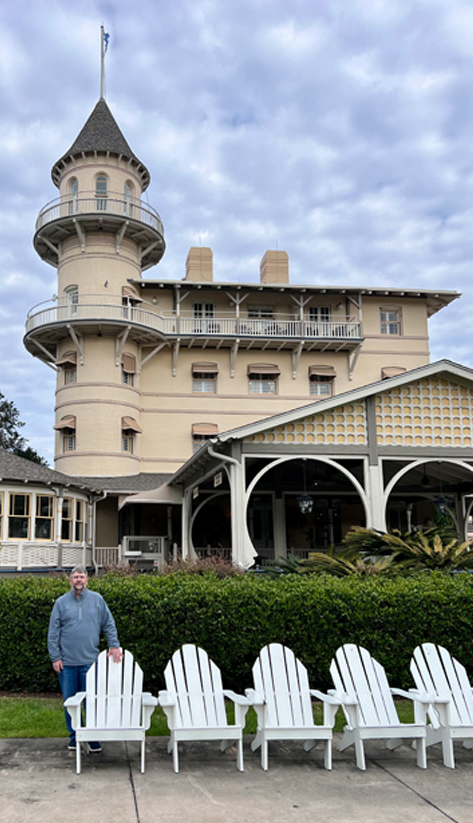 Outside the Jekyll Island Club, Georgia
Outside the Jekyll Island Club, Georgia
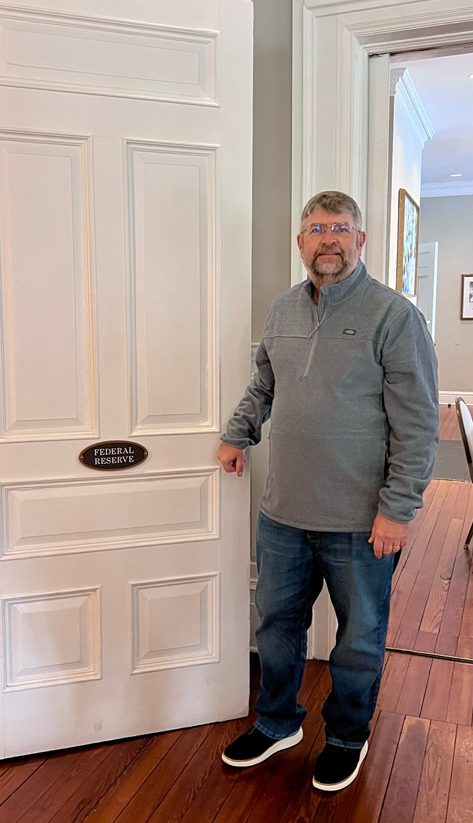 The Federal Reserve Room at the Jekyll Island Club
The Federal Reserve Room at the Jekyll Island Club
My last visit was with the Rotary Club of Jekyll Island. I wanted to wrap up this initiative, and my career, in the location where, early in the last century, the first discussions that led to the creation of the Federal Reserve were held. After the meeting, I went to the Jekyll Island Club and spent a few quiet moments in the Federal Reserve Room, the place where the meeting took place. I thought about the future of the Fed and how I hoped, that in some small way, I helped show that we are an organization that cares deeply about the people we serve.




